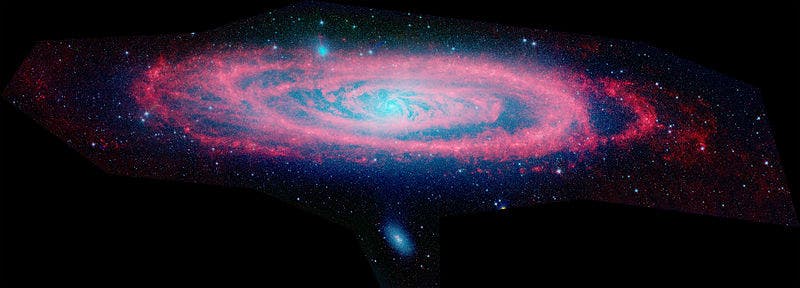In an article published in the Astrophysical Journal last week, astronomers described a massive halo around the Andromeda Galaxy, extending up close to Earth. The team spotted the halo through NASA’s Hubble Space Telescope and consider it one of the galaxy’s most important features.

The Andromeda Galaxy seen in infrared by the Spitzer Space Telescope, one of NASA’s four Great Space Observatories. Image via Wikipedia.
“Halos are the gaseous atmospheres of galaxies,” Lehner said in a statement released by Notre Dame News. “The properties of these gaseous halos control the rate at which stars form in galaxies.”
The Andromeda Galaxy is located about 2.5 million light years from our own, and it is the nearest galaxy to the Milky Way. It’s the largest galaxy in the Local Group. The halo itself is huge, extending one million light years from the galaxy, containing about as much mass as half the stars in Andromeda.
So how is it that we didn’t discover something as huge as this until now? Well, as the team explains, the gas in the halo is invisible, so they had to rely on an indirect method to view it, using light from 18 different quasars. Quasars are a class of amazing objects – compact regions in the center of a massive galaxy surrounding a central supermassive black hole. They rotate at high speeds and emit electromagnetic radiation which can be detected when they are faced towards the Earth. Imagine a rotating lighthouse – you can see its light when it’s facing you.
“As the light from the quasars travels toward Hubble, the halo’s gas will absorb some of that light and make the quasar appear a little darker in just a very small wavelength range,” the study’s co-author J. Christopher Howk said.
Halos have been observed before, but never before has one so big been imaged. We don’t know if the Milky Way also has a halo; if it does, then the two halos might merge sooner than the two galaxies, and the consequences are still not yet understood.
If you’re worried about the collision of the two galaxies, then you should know that’s only going to happen about 4 billion years from now.









